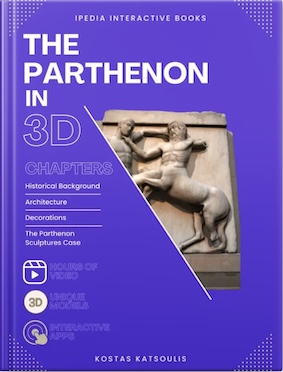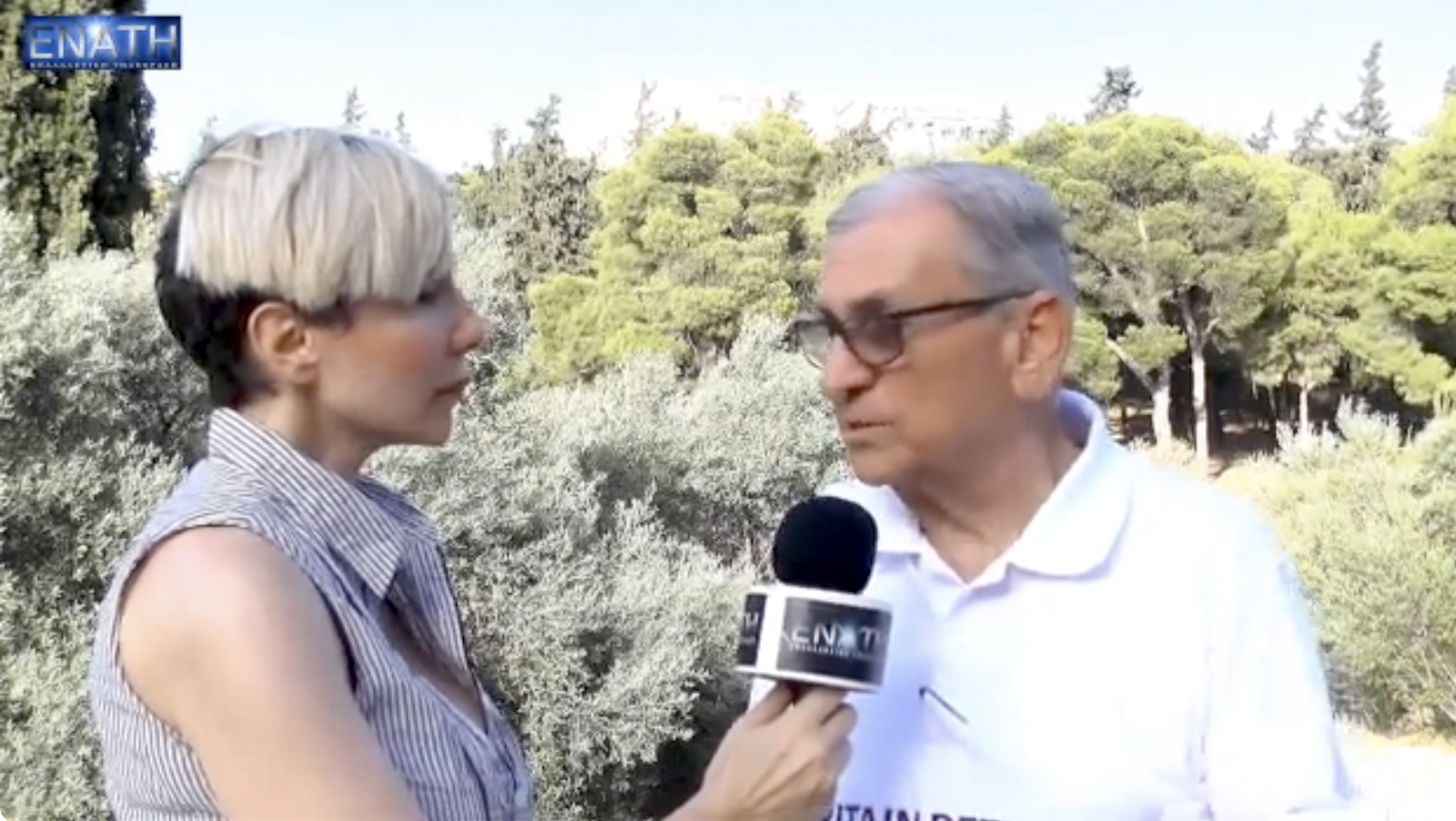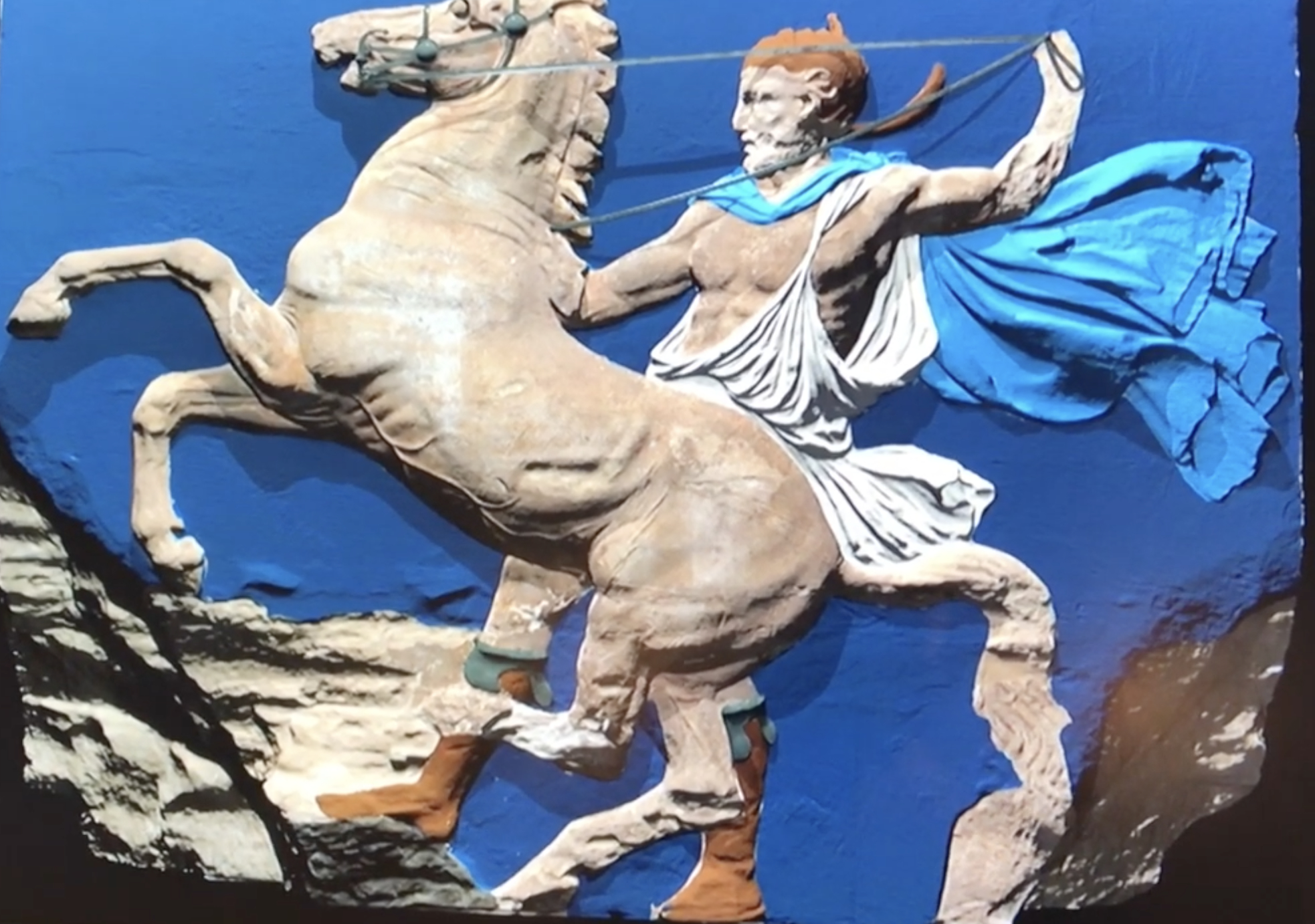
By Michael J. Reppas II, Esq.
The history of mankind is sometimes presented as a timeline where milestone events are pegged and their significance explained. An honest timeline of mankind’s history marks creations of genius in art, architecture, philosophy and literature alongside those of darker events such as war, conquest, and genocide. An intellectually honest timeline that identifies both the positive and negative milestone events in our past. Authors and educators illustrating the development of mankind, typically mark milestone events based upon what they believe were creations of such significant occurrence that their existence forever changed the way we thought and lived.
One must be careful, however, when attempting to explain The History of the World in 100 Objects (for anyone not aware, this is the title of the new book by the Director of the British Museum). Careful, because to many, the present day disposition of those 100 objects is a milestone event in and of itself. The fact that looted antiquities end up on display in a “universal museum,” to this author, is an incredible cultural phenomenon that should be pegged on the timeline. That we in the 21st Century are able to celebrate the creation of the Parthenon while simultaneously ignoring the fact that the majority of the temple’s frieze was stolen from Greece and is on permanent display in the British Museum, is nothing short of amazing. Propaganda and control of the media. They tell you what history is and you believe it. The general public can only comment on what they see and hear. And they read the The History of the World in 100 Objects, they watch the documentary about it (yes, the BBC created a video documentary to support it) and the rest of the history is ignored. This is certainly one big reason that the status quo allows any part of the Parthenon to be considered the property of the British Museum.
I believe that it is too easy to get swept away by eloquent words and high impact videos and images extolling the beauty and significance of the Parthenon Sculptures, because when lost in the presentation, we tend to ignore the fact that the text or script we just consumed omitted the fact that the Parthenon is the product of the Greek people’s genius, not the British. Simply because the British Museum publishes books and sponsors documentaries telling us how important the Parthenon Sculptures are, does not mean that they get to keep them. What we are not told is that the Parthenon was created as a single structure, a single piece of art, intentionally created to be permanent and immovable. Designed, created and built in Athens, to remain in Athens, not London, or anywhere else. In a timeline claiming to be the history of the world, presenting half the truth is anything but intellectually honest.
Spoils of war, looted graveyards, stolen relics?…. don’t listen
“History,” my dear boy, is written by the winner
Don’t ask too many questions, take what I tell you as certain
Don’t read between the lines – ignore the man behind the curtain
In defending their exclusive control and claimed ownership of the “Elgin Marbles,” the Director of the British Museum was recently quoted as saying: “in Athens, they can be part of a Greek story and in London, they can be part of a world story.” This argument is a ruse. It is what we call in the legal world a “red herring;” something that does not exist, an illusory argument meant to distract you from the truth. The truth is that the Parthenon and all of its sculptures are a Greek cultural artifact. The truth is that over 60% of the Parthenon Sculptures were forcibly removed from the Parthenon between 1801-1811 by British Lord Elgin, were subsequently sold by Elgin to the British Parliament and then donated to the British Museum where they have remained ever since. Their aesthetic beauty and historical significance is the “Greek story.” Their looting and display in London is part of their “world history.”
The history of mankind that has been passed down to us, is a mix of truth and mythology. What really happened 5,000 or 10,000 years ago is invariably the subject of serious debate. It is therefore critical for our continued development, that we preserve and protect the unity of all artifacts we find. We all must respect our history. We must not be willing to carve it up and spread it around. We must recognize how rare the opportunity is when our ancient past becomes tangible and alive and we can actually see our past achievements in ancient works of art that have survived the passage of time. These gifts show us what our past looked like, and they are mythology no more. We can touch and feel them. We can study and examine them. These gifts afford us the opportunity to connect with our ancestors. Invariably we allow ourselves to daydream of what it would have been like walking amongst the creators, wondering what it must have been like to experience the site while it was completely intact, while it was whole, as the creators intended. The Parthenon is one such gift and we must fight to have its integrity restored.
Quite often my criticism of the British Museum is misinterpreted as a dislike of the British people or the country itself; both ideas being completely false. The attack is upon the manner in which the British Museum conducts business. Be clear: I love museums and cherish their existence. Their mission to educate and enlighten must be protected and promoted. They are institutions of higher learning and places where several, but not all, of our milestone creations can and should be seen. My problem is not with the institution of the museum, but rather with the intellectually dishonest individuals who acquire and control art and artifacts of disputed ownership that are displayed in said museums – and who refuse to allow for those pieces to be returned to their country of origin. I am not referring to a narrow example, such as where a stolen painting gets acquired and then placed on display, but rather to the broader idea of what items should even be on display in a museum. It is one thing for a museum to display a painting on a canvas and quite another for a museum to display a fresco painted on the ceiling of church 1,000 miles away. The artist who created the first painting intended it to be on a canvas, knowing that it was movable property; knowing that it could end up on display 1,000 miles away some day. The artist who created the fresco did so with the intent that it be permanently affixed to the ceiling of the church; forever part of that building, not 1,000 miles away. So too with the Parthenon and its Sculptures: intended by their creators to be immovable.
It is morally wrong and intellectually dishonest to take a contrary position to this simple and obvious truth: the proper location of a piece of immovable cultural property can only be the location chosen by the artist who created it. Shall we chisel out Lincoln’s head from Mt. Rushmore and send it abroad? Tear off an arm of Lady Liberty? The Great Wall of China is very, very long and can certainly be dismembered without anyone noticing much, right? What is needed is an end to the hide-and-seek, smoke and mirrors, three-card-shuffle games played by certain museums. What we need is intellectual honesty: we all know that it is wrong to forcibly remove and display a country’s immovable cultural property. Intellectual honesty: we all know that the Parthenon Sculptures do not belong in London – they belong in Athens. That is the truth and we all know it… even the Director of the British Museum.
We must also acknowledge that this is not just a Greek issue. Ours is not a demand from ethnocentric Greeks, but one shared by people from around the world seeking to preserve the unity of all pieces of antiquity. Indeed, some of the loudest voices on repatriation of the Parthenon Sculptures have been from British authors. From the time of the original taking in the early 1800s, contemporaries of Lord Elgin were outraged at his actions and called him nothing short of a thief. Lord Byron, the great English poet, was one of his harshest critics at the time and the first real English voice calling for their repatriation to Greece (“Give back the Elgin marbles; let them lie / unsullied, pure beneath and Attic sky”). But Byron was not alone. I would be remiss if I failed to mention the recently deceased New York Times Best Selling author, Chritopher Hitchens, who wrote a magnificent book setting out why the “Elgin Marbles” must be returned to Greece. Famed British author Stephen Fry recently wrote: “How can we British be proud until we sit down with Greek politicians and arrange for the return of their treasure.” Intellectual honesty requires the sculptures to be returned to Greece.
The history of the world is the history of the Parthenon: we either chose to return them to Greece or we chose to accept the status quo. We right the wrong or we turn a blind eye. This is the milestone in the timeline of our history right now. You decide how it will be explained in the notes under the peg.
Michael J. Reppas II, Esq
April 25, 2012



